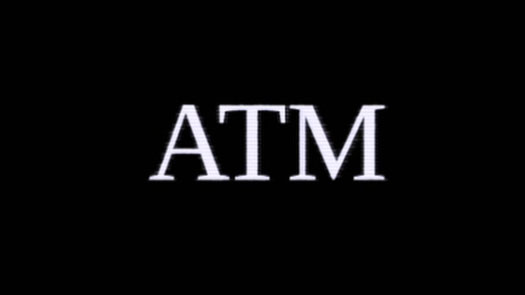
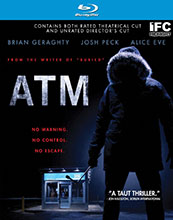 BUY FROM AMAZON: CLICK HERE!
BUY FROM AMAZON: CLICK HERE!
MSRP $29.98
RATED R/Unrated
STUDIO MPI Home Video
RUNNING TIME 90/85 Minutes
SPECIAL FEATURES
• Trailer
• Making-Of Featurette
The Pitch
Don’cha hate it when you’re just trying to make a machine give you money, and somebody just wants to fuck your day up?
The Humans
Brian Geraghty, Alice Eve, Josh Peck
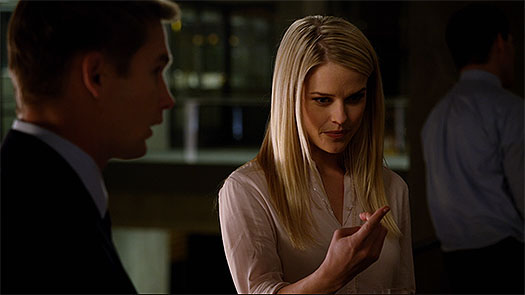
“… and then he says ‘OUUUUUCH’ and sticks his glowing finger right in this dude’s brown eye.”
The Nutshell
After leaving their company Christmas Party together, David (Brian Geraghty) and Emily’s (Alice Eve) impromptu first date takes an unexpected turn when their coworker, Corey (Josh Peck), asks them to make a late-night stop at an ATM. What should be a routine transaction turns into a bloody battle for survival when an unknown man appears and traps them inside the vestibule. With the wintry temperatures dipping below freezing and the morning sunrise still hours away, they have no choice but to play the man’s deadly game of cat-and-mouse if they want to live through the night.
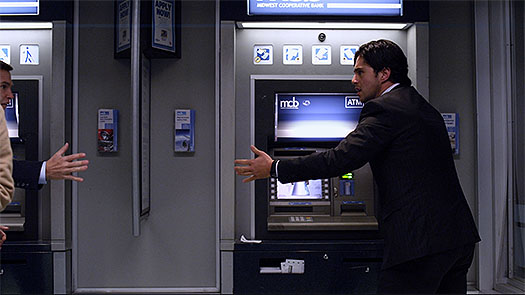
“STOP LOOKIN’ AT MY PIN NUMBER, BRO!!”
The Lowdown
Cinematically speaking, no two words can make me salivate more than “director’s cut”. I love hearing stories of how a filmmaker’s vision was too bold, or that they had a fight with the studio, or that a director didn’t have the means to make the film they had rattling around in their head. Many filmmakers have a revisionist streak a mile wide. You hear it all the time in their DVD commentaries: “I wish I had given him one more take.” ”This shot doesn’t hold up as well as I would have liked.” “I wish this sequence were tighter”. Listen to enough commentaries and it soon becomes apparent why certain filmmakers rarely revisit their films after release.
While I know a director getting another chance to polish their film doesn’t always turn out well (Star Wars is a clichéd choice, but we’re all thinking it), I am fascinated, almost to a fetishistic level, by alternate cuts and how they change a film. So when I read the words “director’s cut” on the cover of ATM, my curiosity was piqued. The disc also contains the theatrical cut, so (joy of joys) I was able to compare the two cuts. I wanted to give first-feature director David Brooks the benefit of the doubt, so I watched the director’s cut first.
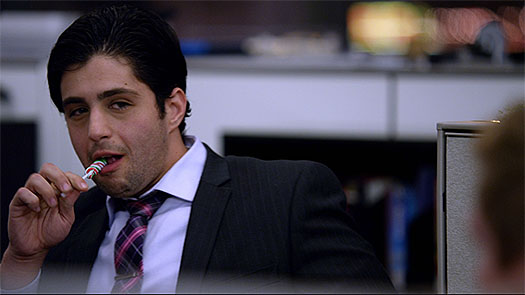
I’m just gonna leave this here.
ATM is a rarity: at eighty-five minutes, the director’s cut is shorter than the theatrical cut. In this case, by about five minutes. There’s one big change, right up front: the director’s cut omits a pre-credits sequence that reveals information about the film’s villain. In the director’s cut, I would classify this information as a spoiler. I do think the film works better by saving it for the end. It doesn’t change much, but it’s a valuable detail. There are other small changes throughout the film, but I wouldn’t be able to spot them unless I played both cuts side by side. I suspect it amounted to a general tightening. It should be noted that the film’s director is also credited as the editor, so I’m sure he was aware of every single shot that could have been trimmed by a few frames.
While the director’s cut may be slightly superior, is either cut a good film? I’ll put it this way: I think ATM is well directed. Brooks knows how to construct sequences effectively, and he shows precise control over the film’s tone. He knows where the laughs should be. The film is also pretty well shot. The action is never unclear, and the geography of the film’s central location is well established. The lighting is great, too. The production value is really admirable, aside from a close-up stabbing shot where you can clearly see the retractable prop knife. The ATM set never looks flimsy or fake. The film takes place in subzero temperatures, and despite the lack of snow, the actors are doing their best to act cold, which must be really difficult. From a technical perspective, the film has a lot going for it. From a narrative perspective, it’s pretty disappointing.
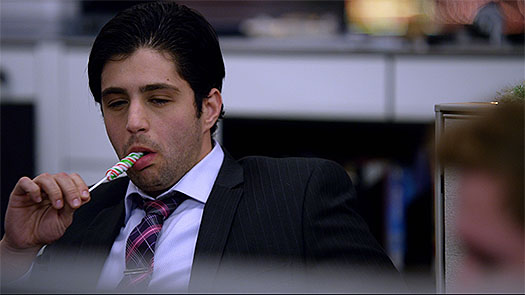
This, too.
The film makes a blatant thematic statement when our male leads are introduced. “Life’s about choices… one bad one can ruin every good one you ever made”, says Corey, played by Josh Peck (the kid who got what he deserved in Mean Creek). It’s heavyhanded stuff like this that permeates the dialogue, and lets us know just how annoying Corey will be throughout the rest of the film. Corey is thoroughly unlikable, but that is by design. Our protagonist, David, played earnestly by Brian Geraghty, is identifiable but only because he had a shitty day at work and he’s got a crush on Emily, played by Alice Eve.
None of these characters have any real backstory, but in the context of this very small narrative, too much character history would have simply clouded the film’s clear and simple intent. Three silly white people get trapped in an ATM vestibule by another faceless white guy. Hijinks ensue. The dynamics between the characters are obvious. They each have a role to play in the scenario, but David and Emily, the characters that must carry the film, are as featureless as our masked killer. Corey, however, is defined like a marble statue. After only several short scenes, he’s made an impression. We get him. We can predict him. We also want him to take a long walk off a short pier, because he’s irritating as hell. Simply put, the interactions between the characters just don’t make for interesting cinema.
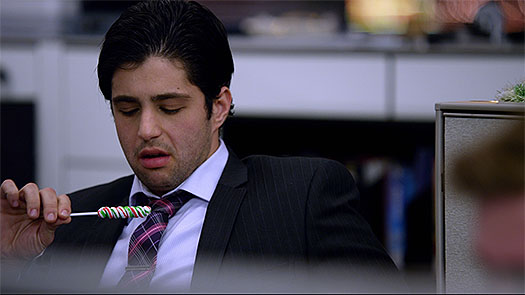
And finally, this.
The other big point of contention is the film’s ending. Without going into specifics, I’d say the film has a non-ending. I think the climax might provide the only memorable set piece in the whole film, but after that, the film deflates. Yes, the theme ties into it, but I was left with an overwhelming sense of “Well, that just happened.” The resolution is the real head-scratcher, though. We learn SOMETHING about the whole attack, but it’s not satisfying, and comes from an unwelcome shift in perspective. In the theatrical cut, this morsel of information is provided up front, giving the end of the film even less impact. In either cut, the question on everyone’s minds (WHY?) is asked earlier in the film, and is only met with a resounding shrug.
While I think comparing two cuts of any film is a valuable exercise in film criticism or film education, there are obviously some better choices than ATM. Not just because the two cuts aren’t vastly different, but because there are so many films that are more memorable than ATM.
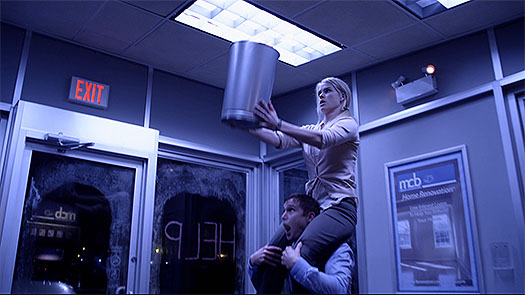
Out of context, this situation lends itself to countless explanations.
The Package
On a lighter note, the video quality of the Blu-Ray is stellar. Reference quality, even. The transfer’s level of sharpness is perfect, the colors are vibrant, the black levels are inky and gorgeous, and there’s nary a trace of noise. The audio is a DTS-HD Master Audio 5.1 track, and, while not as impressive as the video, is very well mixed. The only extras are the trailer and a short Making-Of featurette. Neither are particularly remarkable, just like the film.
Rating: 




Out of a Possible 5 Stars